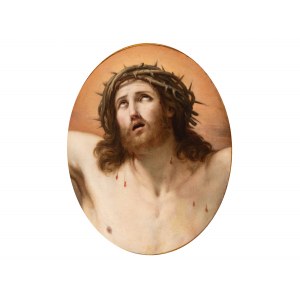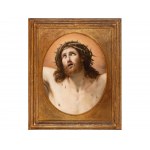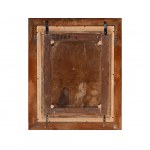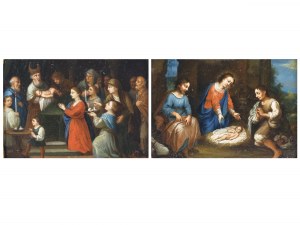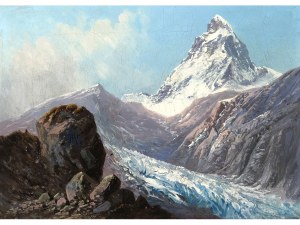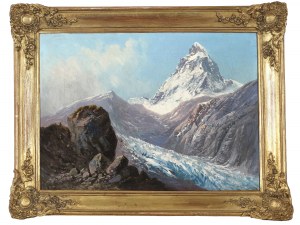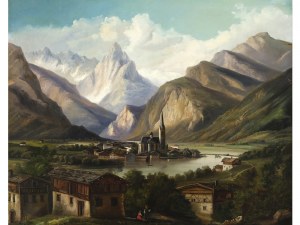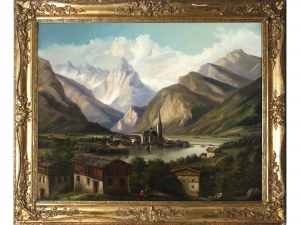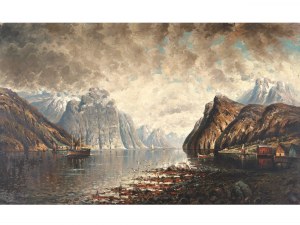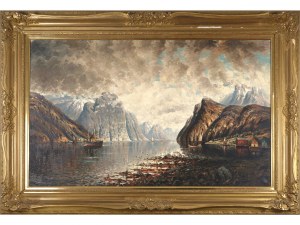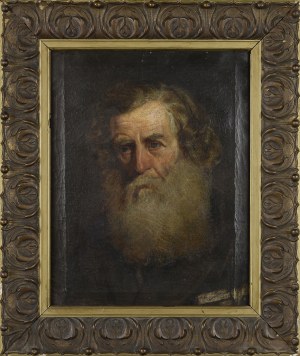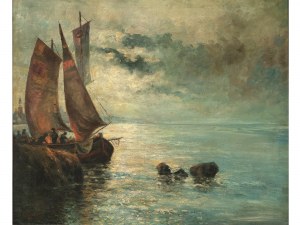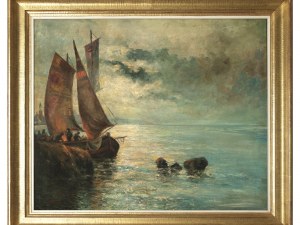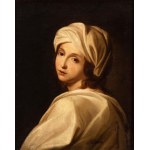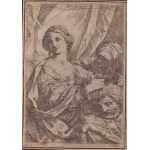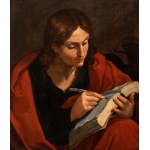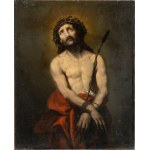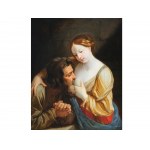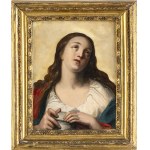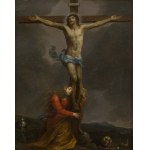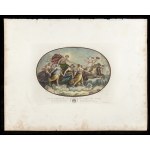Guido Reni
Bologna 1575 - 1642 Bologna, and workshop, attributed
Ecce Homo
Oil on canvas
62 x 50 cm, with frame 81 x 68 cm
The naked Jesus is depicted here as a half figure in an oval section of the painting. His head with wavy brown hair is adorned with a crown of thorns, which distinguishes mockingly him as the King of the Jews. His gaze is raptly directed upwards, his mouth open in a silent cry of pain, underlined by the drops of blood on his neck and upper body. These can also be associated with sweat: Jesus prayed on Mount Golgotha and, according to Luke's Gospel, "[he] was in agony and prayed more fiercely. And his sweat became like drops of blood falling to the ground" (Luke 22:44).
Visible here is the Christian image motif of the Ecce homo, in the type of a devotional image close to that of the so-called Man of Sorrows. The term comes from the Gospel of John in the Latin version of the Bible (Vulgate John 19:5), where this exclamation means "Behold the man". The depiction is to be associated with Pontius Pilate, the Roman governor, who presents the prisoner Jesus of Nazareth to the people. Here, the suffering Jesus is brought directly before the viewers' eyes, whereby the personal identification with the events of the Passion is brought into greater focus.
As a central representative of the Bolognese School, which heralded Baroque painting in Italy, Reni - also called "il divino" (the divine) - painted in the style of Baroque classicism. From 1614 onwards, he had one - and later even two - workshops with more than 200 students in Bologna and carried out numerous commissions. These were of a biblical, mythological, and allegorical nature.
The light effect of the background can be linked to the same subject by Reni, which dates from around 1636 and is now in the Louvre (inv. no. 527, MR280). However, in the painting in the Louvre, Jesus is carrying a staff and is looking upwards to the right with his head turned, whereas in this painting Jesus is looking straight upwards. It is therefore more closely related to the examples in the Palazzo Corsini and the Detroit Institute of Arts (inv. no. 89.23) from the early 1630s. Here the style is characterised by a loose painting style using light colours, typical of Reni's oeuvre of this time.
Not only the oval format and the composition are comparable, but also details such as the straight upward gaze, the wide-open mouth or the drops of blood running down his torso. Particularly impressive is the pathos in the expression of Jesus, whose eyebrows are depicted slightly drawn together, while the eyeballs almost seem to emerge from the sockets. Typical of Reni's works is the calmly harmonious, self-contained composition here as well, which is already an expression of pure classicism, entirely in keeping with Reni's idealistic style. The suffering Christ, but with his beauty intact, is shown in isolation, without narrative context, which was a favourite subject of Reni. In the work shown here, the hair and beard are more softly modelled and the crown of thorns more organically executed. The skin is shown in a luminously expressive colouring in a light source from the upper left, which has also been called "seconda maniera" in scholarly literature. This simultaneously illuminates the face of Jesus, whereby this is possibly already the expression of his communication with God the Father, who takes Jesus to him and thus heralds the bringing of salvation to mankind.
Such repetitions were made from the 1630s onwards by Reni's pupils and workshop workers in order to gain additional income and, not least, to compensate for Reni's intensifying gambling addiction. As this subject is found in numerous museums and on the art market, it can be assumed that this painting was made in Reni's workshop in the 1630s or 1640s and reflects the painter's great legacy.
For example, another high-quality repetition of Reni's Ecce homo subject of the same size was sold at auction at the Dorotheum in Vienna in 2009 for a high five-figure sum. This testifies to the popularity of the subject not only at the time, when the depiction was particularly popular with private clients and was frequently commissioned, but also to the great importance of the artist up to the present day.
Ostatnio oglądane
Zaloguj się aby zobaczyć listę pozycji
Ulubione
Zaloguj się aby zobaczyć listę pozycji



